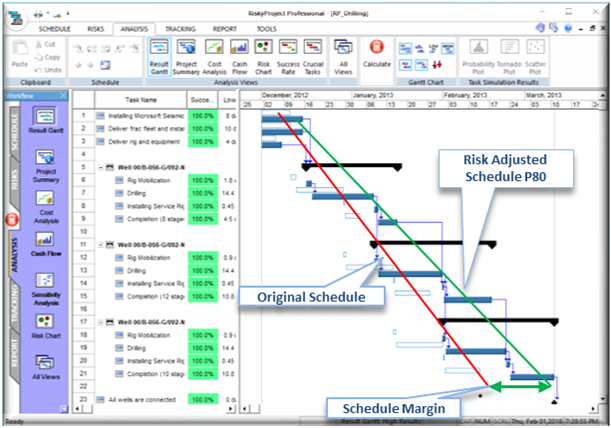“How do I convince my team that this is worth the effort?” is one of the frequently asked questions that we run across during our discussions with project teams and it is a good question that deserves an answer. Project risk analysis is not without cost, it takes time and effort to develop the culture, processes and tools to perform effectively and often, while the time and cost required is self-evident, the benefits can often be difficult to discern and the ones that are most important are often not the most obvious.

At a very basic level risk analysis is a thinking exercise, and because of this, it provides your team a chance to look very closely at your plan and ask three questions: What could happen, what would be the impact, and what can we do about it? It sounds very simple, but it lies at the heart of what it means to manage your projects. It allows you to identify risk events, how they could impact your project, and investigate the best way to minimize their impact on your project objectives. It encourages thinking and communication, keys to successful project teams.
My second most important benefit is that it is the most effective way to create project plans that allow you to deliver on budget and schedule by providing a “risk adjusted” cost and schedule. This allows you to add schedule margin and cost contingency in line with your organizations risk tolerance as well as providing a high confidence of success. Project risk comes in two forms, risk events (manageable) and uncertainties (unmanageable). Risk events can be managed, which is generally seen as Avoid, Transfer, Mitigate, or Accept depending upon their expected impact. For those risk events that cannot be avoided or transferred, we can make plans to reduce the impact of the risks. Because we can only minimize, not eliminate these risks, we are left with residual risks that must be accounted for. In addition, we need to account for uncertainty, which is the variance in all project activities that is not due to risk events. These uncertainties can be characterized as statistical distributions (triangular, beta, normal, etc.) with probability distributions. The level of uncertainty is often dependent upon many factors including personnel, maturity of technology, type of development etc. By assigning risks and uncertainties to the project activities and running Monte Carlo simulation, we can generate a risk-adjusted plan. This risk-adjusted plan provides a guide to both the level of project risk as well as risk appropriate schedule margin and cost contingency.
In this Result Gantt view, we can see how the difference between the original schedule and a P80 schedule that we use to create margins. We can use the same process to generate cost contingency that reflects the level of project risk. In this way you can have a project plan that has buffers that even Goldilocks’ would like, not too little (high chance of failure), not too much (inefficient use of scarce resources) and a recipe that will keep your stakeholder’s happy.
Project risk analysis provides you a simple way to improve insights into how to manage your projects, increase communication across your team, and a reasonable risk adjusted plan to improve your odds of project success.





